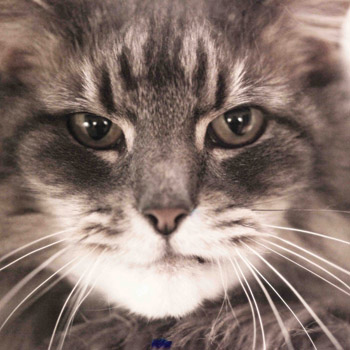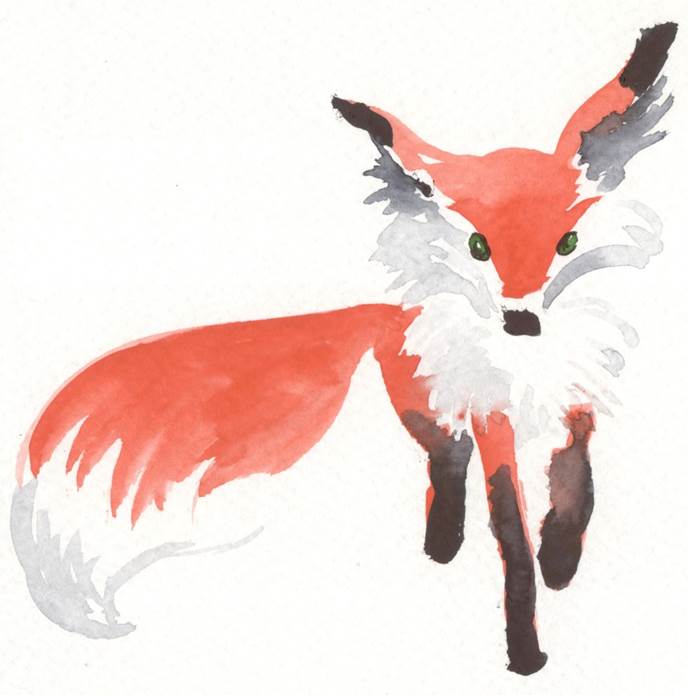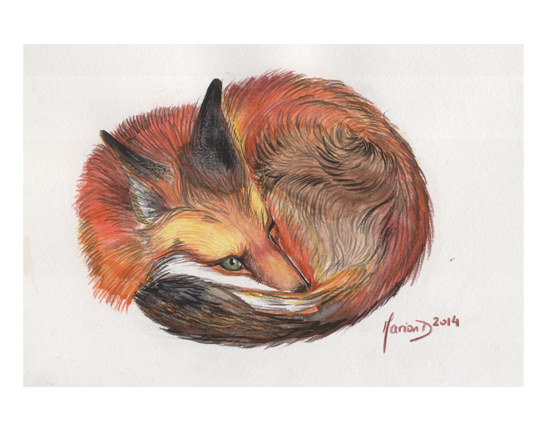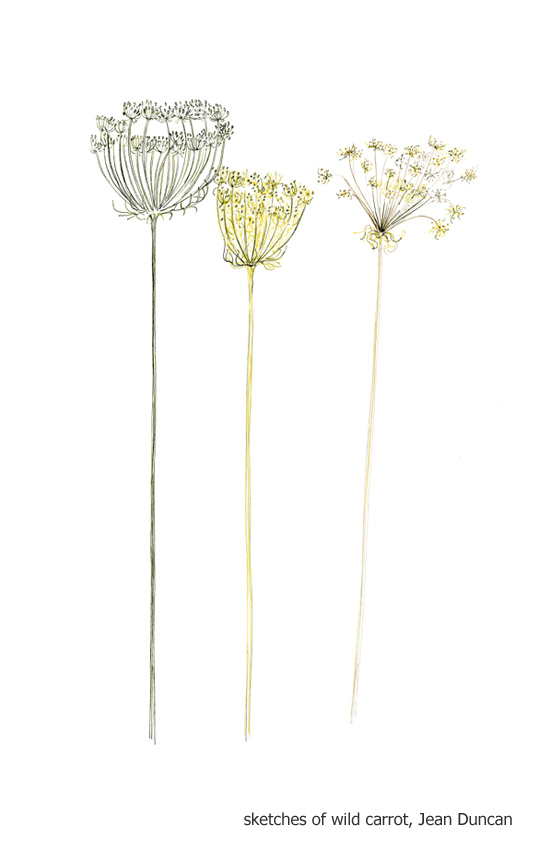Indigenous crops; Scotch Bonnet; wool, woad and indigo; Tam o’Shanter, Burns supper; staple food of the north Atlantic seaboard; tatties, neeps, oat and barley; the grey cat!
In its undying search for the truly indigenous crop, the Living Field investigated the ‘Scotch Bonnet’, to find it was nothing local at all, but a hot little capsicum, now grown in the West Indies and other tropical places and used to give some spicy heat to food.
Why then is it called the Scotch Bonnet? It seems because it looks like one. Unlike many varieties of the chillies, this one bulges and sometimes flops when it leaves the stem: to some, with imagination, it resembles a Scotch Bonnet, on a head.
The Scotch Bonnet
Now the Living Field is well disposed to the headgear named Scotch Bonnet, originally made of local fibre, usually wool, and dyed blue with woad Isatis tinctoria, which was once grown as a crop in these islands, or with the deeper indigo Indigofera tinctoria, which is imported and replaced woad. Such skill and craft go into making this one little hat: you have to rear the sheep and shear them, then wash, spin and weave the fibre, grow and harvest the woad or indigo, extract the dyestuff, dye the cloth, then form it into a shape that would fit on a head – and it was all done before electricity.
But we see the Scotch Bonnet (headgear) is also called the Tam o’Shanter, and this is, it seems, because Tam in the poem by Burns wears a blue bonnet – it’s mentioned only once, but there it is – ‘Tam’s blue bonnet’.
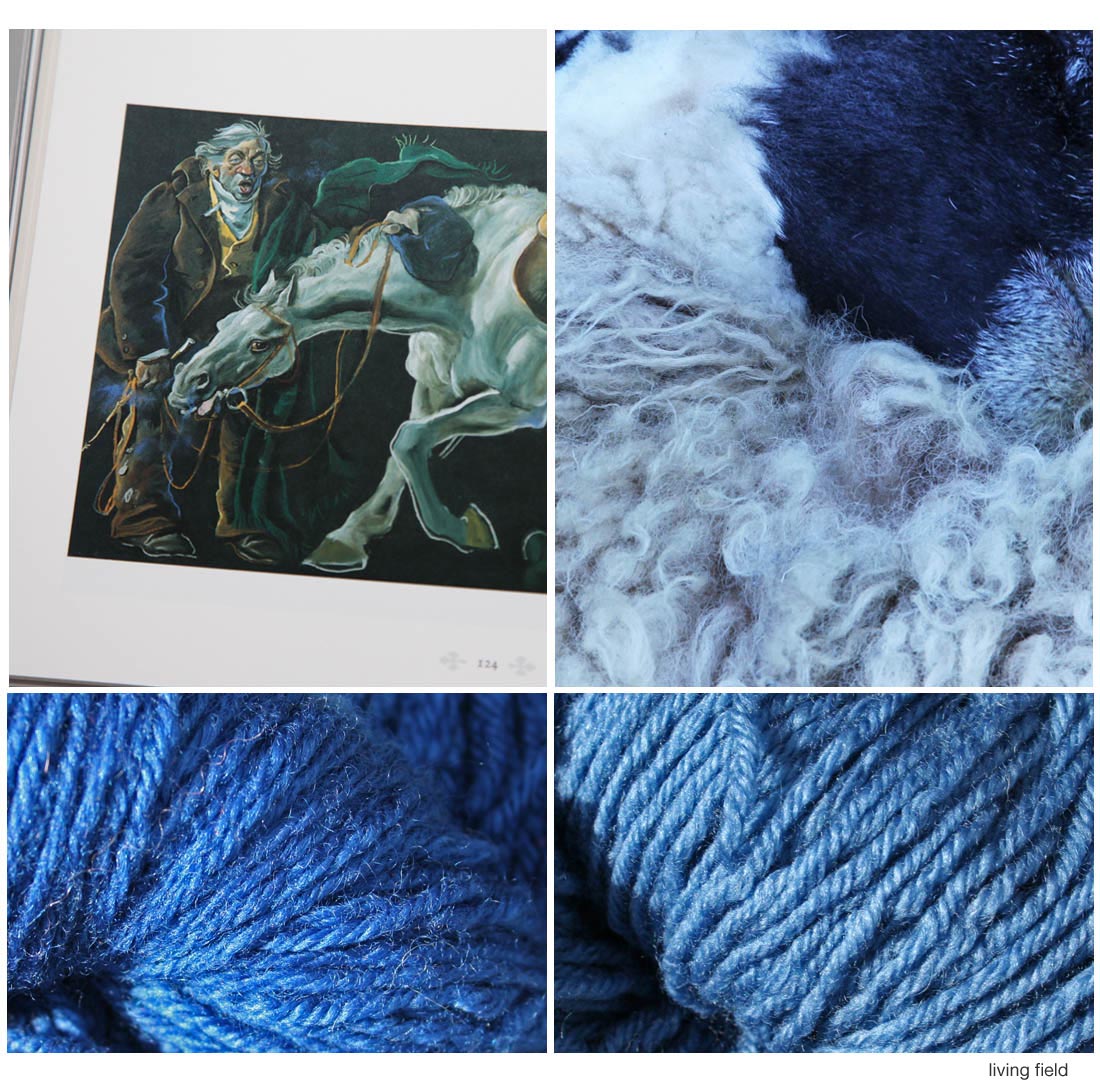
Tam o’Shanter
Now these three words do not define what sort of bonnet it is, yet those who have depicted the bonnet in drawings and paintings of the epic give it the character and shape of a Scotch Bonnet, and those such as Alexander Goudie (1933-2004) who have painted in colour give it the colour blue – woad-blue or indigo-blue.
In Goudie’s fabulous paintings, the blue bonnet is there in almost every picture. It grows in significance. Even when chased by Cutty Sark and the other infernals, the blue bonnet stays on. Even when, with diminishing sark, she grabs Maggie’s (Tam’s mare’s) tail, pulls it and leaves just a stump of hair … the bonnet stays on. Considering the state of Tam, and the number and aggression of the infernals .. you wonder how the man and mare escaped? Was there something in these blue-bearing plants that somehow made Tam and his mare go faster or the infernals slower. Doesn’t matter, because if they had caught him, there would be no recitations of the poem and much less fun at Burns Night.
Burns Night
The poem Tam o’Shanter is very much associated with the festivities of the Burns Supper, and through the medium of the Supper, visitors can sample some of the great staple food and drink of the north Atlantic seaboard – oat, swede, potato and barley. Together, and with offal, including lungs, and other fleshly stuff from sheep, they make the traditional meal of haggis, neeps and tatties, the barley going not so much into the haggis as into the dram for those who partake (though, on the Night, the dram can sometimes … well … go into the haggis).
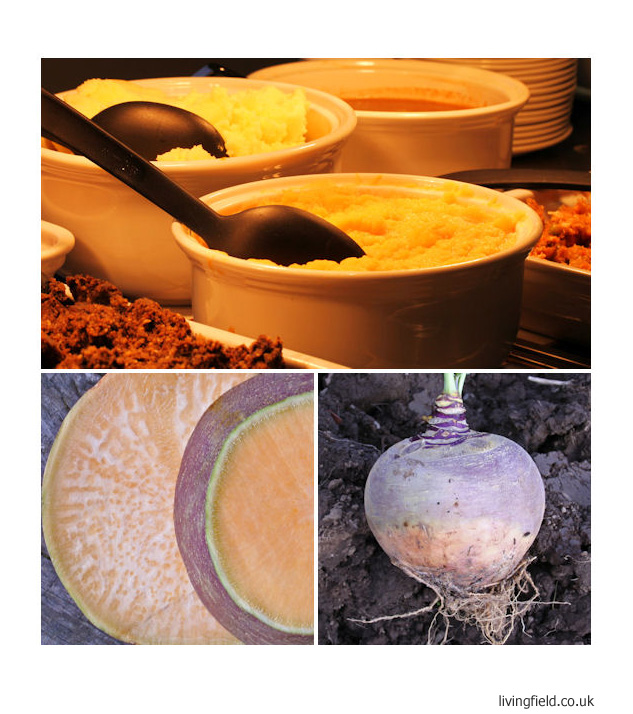
Would Burns have known the main crops that now form his Supper – he was a farmer for a few years? Sheep of course he would have known. Of the three main vegetable constituents, only oat has been here for a long time and that for thousands of years. He would have known oat. The neeps, usually swede rather than the (white) turnip, and tatties (potato) are relative newcomers, arriving perhaps a few decades before Burns was born. Burns probably knew about swede and potato but might not have grown them. Barley is older than oat here and he would have known barley and certainly known its products.
So while Burns (1759-1796) is now celebrated around the world, the world reciprocated before he was born by offering the vegetable constituents of his commemorative supper – oat and barley from west Asia, swede from (probably, though it’s not certain) east Europe or west Asia and potato from Central America. What a generous world!
Sources at the bottom of the page give links to his poems and song and to the Scots Dictionary. The image of haggis, neeps and tatties (above) was taken at a Burns ‘lunch’ at the Hutton staff restaurant. For those who want to know more about the crops, below is something more on swede, potato, oat and barley.
The crops
Tatties
The tatties’ tale is well told elsewhere. Briefly, potato Solanum tuberosum arrived in Britain from the other side of the Atlantic in the late 1500s, but gained little interest other than a garden curiosity until …..
“To Thomas Prentice, a common day-labourer, who lived near Kilsyth, is the honour due of bringing this useful esculent into general notice in Scotland [so wrote Lawson and Son in 1836 only 40 years after Burns’ death … and read on … ] He procured, in 1728, some “sets” from Lancashire, and bestowed considerable care in their propagation; and as their value became known, they were eagerly sought after by his immediate neighbours. By continuing the cultivation he, in a few years, saved upwards of £200, with which he purchased a small annuity, on which he lived independently to an old age, dying at Edinburgh in the year 1792.”
So Thomas got his tattie tubers from Lancashire well before Burns was born and he died only a few years before Burns did. Burns was probably familiar with the potato, but only just. His parents’ generation probably did not know it and his grandparents’ would not have known it. Yet what an explosion of genetic resources there was after that, because little over a hundred years later there were 175 recognised types of potato known to Lawson and Son (1836, 1850) and today there are great collections of genetic resources such as the one at the Hutton Institute.
Neeps
In their list of 1852, Lawson and Son, seedsmen from Edinburgh, write “in modern times the turnip seems to have been re-introduced to this country from Flanders about two-hundred years ago” which is the 1650s or thereabouts, but they also state that the time of introduction and the degree of cultivation of the swede or Swedish turnip is less certain though probably later (let’s approximate to around 1700). By Burns’ time the turnip had become a commercial farm crop in some areas of Scotland. Today the turnip has the botanical name Brassica rapa and the swede Brassica napus.
Both types of turnip were used to feed horses and cattle, but also people. The swede, the same species as oilseed rape, has leaf that is less coarse and hairy than the turnip, bluey-green rather than bright green and generally a yellow-orange flesh rather than white, which colour remains when cooked and mashed. So the neeps that are eaten these days with haggis and tatties are mostly swedes. An excellent vegetable, rich, smooth and distinctive to the taste, one of the very finest of the cabbages.
The corn
Oat Avena sativa and barley Hordeum vulgare had been the staple cereals of the north atlantic seaboard for a very long time. Charred grain of barley has been found in the earliest farming settlements. Their relative popularity has risen and fallen but in Burns’ time, oat was by far the most common, and it is the meal ground from oat grains that binds the animal constituents of the haggis. Today it’s the other way round, barley is the commoner crop, though oat is the one still used in haggis. More on oat and barley can be found on this site at Garden/Cereals and in the series of articles on landraces, e.g. The bere line – rhymes with hairline.
The grey cat?
She says “Arrived, invited, for a SoSCOtchBOnnet photoshoot posing in nothing but a Scotch Bonnet – and what a bonnet! Fine wool, indigo-dyed, cost me the earth … credit card maxed out … but the editor says ‘no nudity on the Living Field web site’ and I had to keep my fur on … no fun in that. Name’s Meggie by the way, like Tam’s horse Maggie but with an ‘e’. I do photoshoots. Call me.”
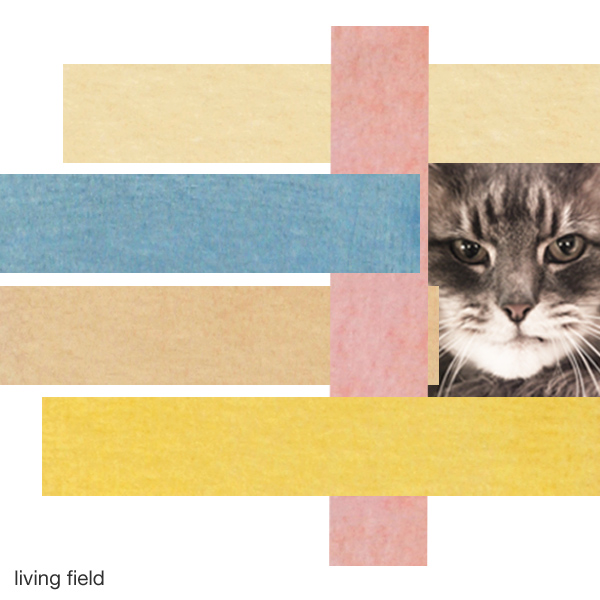
Sources
Burns poetry. Best get a book of it – there are several – and read it by a fireside on a winter’s night or in a field of corn and poppies in midsummer.
Burns is accessible online, e.g. http://www.robertburns.org and http://www.bbc.co.uk/arts/robertburns/biography.shtml
Tam o’Shanter, a tale by Robert Burns, illustrated by Alexander Goudie. 2011. Berlinn, Edinburgh. More on the artist at http://www.alexandergoudie.org.uk at which – check under ‘paintings’ and ‘Tam o’Shanter’.
A Scot’s dictionary is handy if you are not familiar, e.g. The Concise Scots Dictionary (The Scots language in one volume from the first records to the present day). Editor in Chief: Mairi Robinson, 1985. Aberdeen University Press.
Online Scots http://www.scots-online.org and http://www.dsl.ac.uk
Lawson and Son’s exhibitions and lists of 1836 and 1852 are described on this site at Bere in Lawsons’ Synopsis 1852

